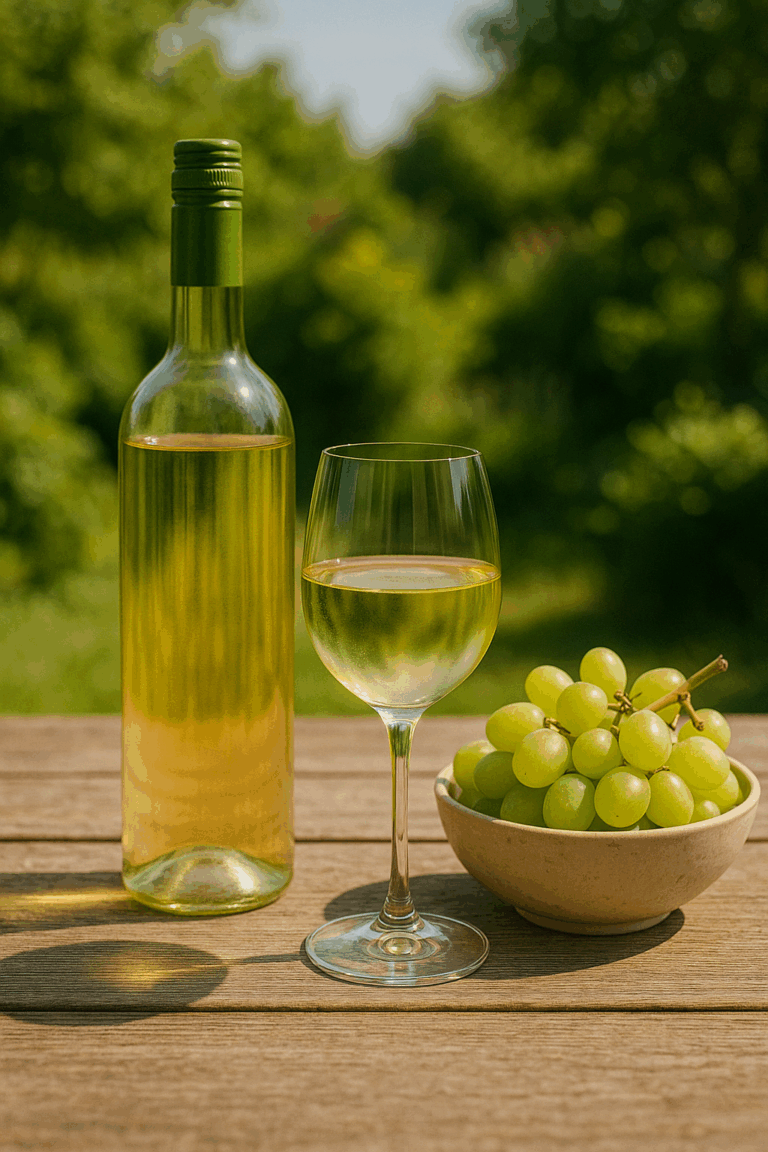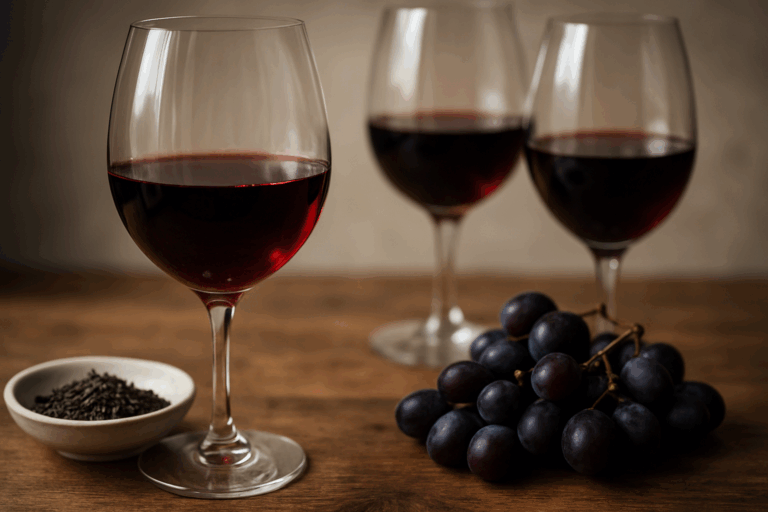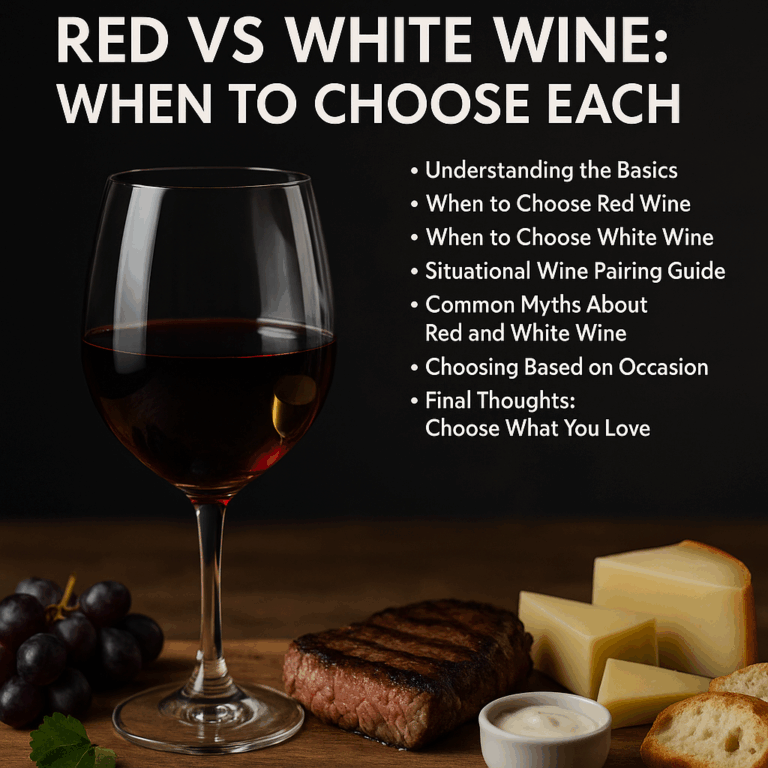Bold Reds and What to Eat With Them
Bold red wines are known for their richness, intensity, and ability to transform a meal into an experience. These wines aren’t subtle they’re full-bodied, tannic, and packed with deep fruit, spice, and earthy notes. When paired with the right food, bold reds can create unforgettable harmony between the flavors on your plate and in your glass.
In this guide, you’ll learn what defines a bold red wine, the best food pairings, and how to serve these wines to get the most from every sip.
What Makes a Red Wine “Bold”?
Not all red wines are bold. Bold reds stand out because they have:
- High tannin levels: Tannins create that dry, puckering feeling in your mouth and add structure.
- High alcohol content: Often above 13.5%, which gives the wine weight and warmth.
- Full body: These wines feel thick or dense in your mouth.
- Deep flavor concentration: Expect rich dark fruits, earthy spices, oak influence, and long finishes.
These characteristics are often the result of grape variety, growing conditions (warm climates), and aging techniques like oak maturation.
Examples of Bold Red Wines
Here are some of the boldest and most popular red wines, with their tasting profiles and origins:
Cabernet Sauvignon
This is the king of bold reds. Expect blackcurrant, green bell pepper, cedar, and graphite. Often aged in oak, it has a firm tannic structure and long aging potential.
Best regions: Napa Valley (California), Bordeaux (France), Chile, Australia.
Syrah / Shiraz
Spicy and powerful. Syrah (France) and Shiraz (Australia) are the same grape but often different in style. Flavors include blackberry, pepper, smoke, and sometimes cured meat.
Best regions: Rhône Valley, Barossa Valley.
Malbec
Juicy and rich, Malbec delivers plum, blackberry, chocolate, and sometimes floral or mineral notes. It’s softer than Cabernet but still quite bold.
Best regions: Argentina (especially Mendoza), Cahors (France).
Zinfandel
This high-alcohol wine is jammy, spicy, and fruit-forward. Think blackberry preserves, cinnamon, and mocha.
Best region: California.
Tempranillo
Spain’s signature grape. Tempranillo (especially in Reserva or Gran Reserva styles) brings dried cherry, fig, tobacco, and leather, often balanced by earthy minerality.
Best region: Rioja, Ribera del Duero.
Why Food Pairing Matters
Bold red wines can easily overpower light dishes, but when paired with foods of equal strength and richness, their flavors blossom. The key to successful pairing is matching intensity, balancing tannins with fat, and harmonizing flavors.
Tannins, in particular, need fat and protein to soften. That’s why red wine and red meat is such a classic pairing it’s chemistry in action.
Best Food Pairings for Bold Red Wines
Red Meat and Game
- Cabernet Sauvignon + grilled ribeye, lamb chops, or braised short ribs
- Malbec + flank steak, beef empanadas, or smoked sausages
- Tempranillo + roast pork, duck breast, or slow-cooked oxtail
The proteins in these meats bind to tannins, mellowing the wine and enhancing the food.
Aged and Hard Cheeses
- Syrah/Shiraz + aged cheddar, gouda, or Roquefort
- Zinfandel + Parmesan, aged Manchego
- Cabernet Sauvignon + Comté or Pecorino Romano
The salt and fat in cheese tame strong tannins and bring out subtle wine notes.
Hearty Pasta and Saucy Dishes
- Tempranillo + pasta with rich tomato sauces or meat ragù
- Zinfandel + baked lasagna with sausage
- Malbec + mushroom risotto or beef-stuffed ravioli
Sauces and starch add body to match the weight of bold reds.
Barbecue and Char-Grilled Foods
- Shiraz + smoky barbecue ribs or brisket
- Zinfandel + grilled burgers with caramelized onions
- Cabernet Sauvignon + grilled lamb skewers
Smokiness in food complements oak-aged wines beautifully.
Savory and Bitter Chocolate
- Petite Sirah + dark chocolate truffles
- Cabernet Sauvignon + chocolate tart with berry reduction
The bitterness in dark chocolate pairs well with the structure of big reds, especially those with berry and cocoa notes.
What to Avoid with Bold Reds
Some foods simply don’t work well with bold reds:
- Delicate seafood: Overpowered by heavy tannins and bold fruit.
- Spicy dishes: Heat and high alcohol can clash, intensifying the burn.
- Vinegar-heavy salads or citrus-based sauces: Too much acidity disrupts the balance.
For these dishes, opt for lighter reds or crisp whites.
Serving Tips
- Decanting: Let your bold reds breathe for 30 minutes to 1 hour to soften tannins and release aromas.
- Serving temperature: Slightly cooler than room temperature, around 60–65°F (16–18°C).
- Glassware: Use large, wide-bowled glasses to help the wine open up.
Final Thought
Bold red wines are powerful, expressive, and deeply satisfying when paired correctly. Whether you’re serving steak, slow-cooked meats, or a gourmet cheese plate, a bold red can elevate the experience. Once you understand the structure and strength of these wines, matching them with the right dish becomes a rewarding part of the wine journey.
Don’t be afraid to experiment. Taste, adjust, and discover your own favorite bold wine and food combinations that’s what wine is all about.






